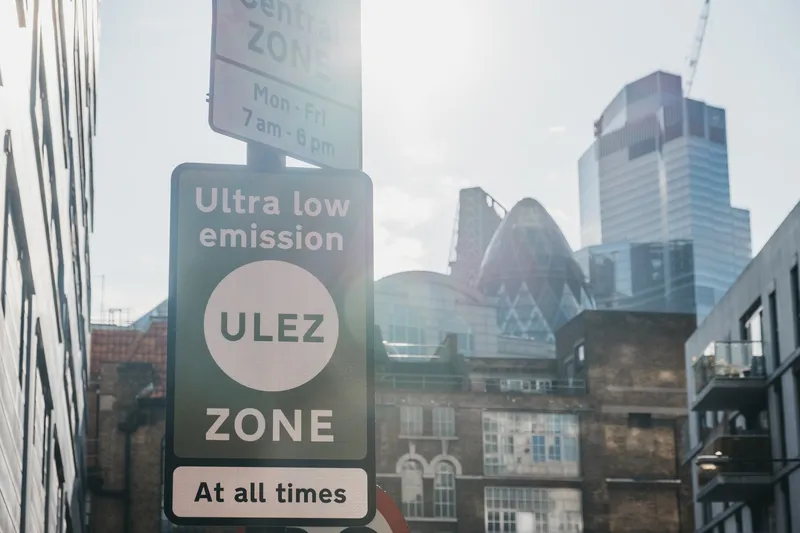
The ultra-low emission zone (ULEZ) was extended this week to include the whole of London – making it perhaps the biggest such scheme in the world – which means that drivers of non-compliant vehicles will pay £12.50 per day to travel anywhere in the UK’s capital.
At the Move London conference in June this year, the expansion was discussed in a panel by Sukky Choongh, environmental manager at the UK’s Society of Motor Manufacturers and Traders, and Nick Sifuentes, program director at The Summit Foundation in New York.
The moderator, ITS International editor Adam Hill, briefly laid out the arguments for and against ULEZ: “It's fair to say that it’s not without controversy. To its opponents, it is a tax on motorists - and even ‘an outrageous money-making scam’ - which will damage local businesses and hit the most vulnerable. Sadiq Khan, the London mayor, says it's a vital public health measure since people are more at risk of heart disease, cancer and dementia due to what he calls our ‘toxic air’. It's also a key mitigator of climate change, Khan says.”
Air quality issues
The issues around air quality are not really contested, says Choongh, who was a London local authority air quality officer before her current role at SMMT. “We've seen the health evidence about the impacts of poor air quality and what it does to people. That research has been around for decades, as far back as the [Harvard] Six City studies and, more recently, [from] the Environmental Research Group at Imperial College London. The air quality impact on health is not really under question here at all.”
Therefore the question, she thinks, is therefore: “What's the best way of tackling it?” From SMMT’s point of view, fleet renewal is definitely the quickest way to improve air quality. This was demonstrated in the first phase of the ULEZ, which covered the inner boroughs of London, and everybody was required to shift to Euro 6 or Euro 4: NOx emissions went down by 44%, Choongh says.
"We need to recognise what is happening and why do people choose to take a car"
Sukky Choongh, SMMT
“But is ULEZ [expansion] the right way to go at this stage?” she continues. “We’re looking at the outer London boroughs which don’t have the same public transport or accessibility that inner London does. So we need to recognise what is happening and why do people choose to take a car. This conversation is very much about cars but I think we need to stop and remember all of the other vehicle types that are on the road as well. You could get rid of your passenger car and go zero-emission transport in your house but then you need stuff. Amazon visit my building every single day so whereas I may not be going to fetch the things I need as a consumer, somebody is.”
Popular engagement
Nick Sifuentes runs the sustainable cities programme at The Summit Foundation. “As somebody who lives in New York City, I approached today's conversation with a little bit of keeping-up-with-the-Jones jealousy, honestly,” he began. “And I say that because in the US, we're actually enjoined from enacting ULEZ policies - ironically due to something called the Clean Air Act which not only regulates air in the US, but limits our states from being able to go above and beyond the federal restrictions that are placed on air quality.”
Sifuentes points out that there are 300 ULEZ-type schemes around the word. “Most of them [are] concentrated here in Europe but a number in Asia and other parts of the world as well,” he says. “One of the things that is incredibly important in talking about the development and the expansion of ULEZ policies is the focus on pollution and emissions. A thing that we have learned a lot about in the US in the way that we have communicated clean air standards is that most people don't connect with the concept of greenhouse gases.
"Most people don't see [climate change] at the granular individual level"
Nick Sifuentes, The Summit Foundation
Obviously climate change is real and a challenge that we are now starting to see affect our daily lives - but most people don't see it at the granular individual level.”
To get popular engagement, the way to frame the debate, he suggests, is the way that London and other jurisdictions have done it – to look at “pollution as a whole and the human health impacts of pollution, the increase in asthma rates for children in areas that have high PM2.5, for instance, or high NOx emissions; the increase in respiratory illnesses, especially on the elderly, and the impact that has on life expectancy - these things are the ways that we have found that we're better able to motivate the public to actually look at and fight for change”.
Economic issues cannot be ignored either, he thinks. “There's a really important emphasis, in the last seven to 10 years in particular, on equity and really making sure that we not only address the public health disparities that exist in communities - but also that we look at the economic disparity as well. So one of the most important elements of ULEZ policies and similar policies like congestion pricing - which we are actually doing in New York - is to make sure that we're addressing not only the environmental concerns, but the economic ones as well.”
There will be more on the ULEZ debate in the upcoming September/October issue of ITS International










